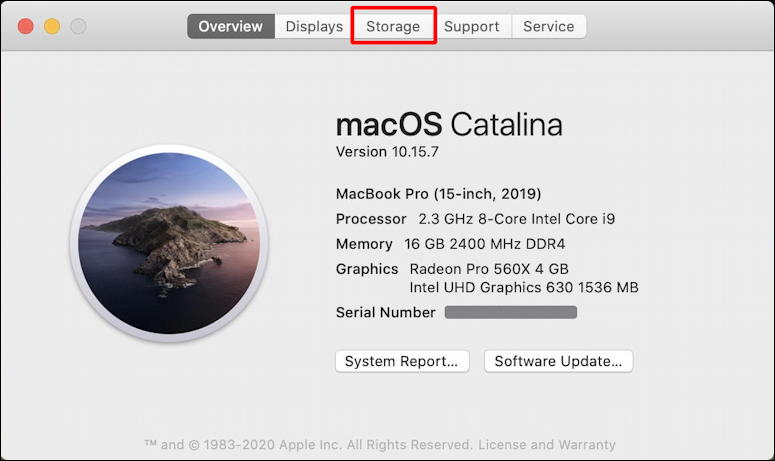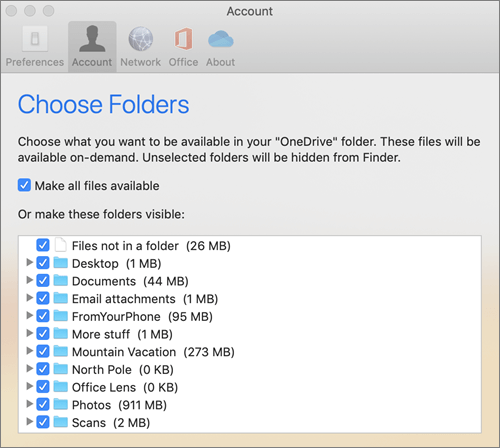Uninstall Unused Applications. Applications can take up large amounts of space. For example, Pages is 266 MB and iPhoto a whopping 1.1 GB. Uninstalling applications in Mac OS X couldn’t be simpler – just delete the application by moving its icon to the Trash. In this video, I answer a question from guitar4542 -who asks: 'hey bwana i have another question. How can i free up my HD sp. Check out these popular apps that help you free up space on your Mac: CleanMyMac X: This 'all-in-one' app functions as a macOS cleaner, a performance monitor, a malware remover, and more.
In spite of its amazing features, the Macbooks hard drives fill up quickly after storing few data on it. We are unable to save a massive amount of data in the MacBooks. But we have here discussed some solution through which you can quickly free up space in MacOS and MAC OS 10. You can free up the disk space by following the simple tips.
Why should you free up disk space?
You must be wondering about, why should you free up memory space? You are doing any task, and you were about to save a necessary file. But suddenly you get a message from the system that your disk space is full; please free up disk. Well, it is the most horrible experience one can face.
You must be thinking about how to free up space in MacOS and MAC OS X? It is a bit difficult to free up space as there is also a chance of losing confidential data.
Tips to Free Up Space In MacOS
Use cleaning software
No one has much time to waste on disk cleaning manually. Thus it is a better choice to use the cleaning app to get rid of files which are unnecessarily blocking your space. This app has all the features for cleaning the disk space accurately.
If you do not have the paid version of the cleaning software, then you can use the trial version to clear space. But please make sure to back up all your data before cleaning the disk space. Just in case you may lose your necessary data while cleaning the unnecessary files.
Delete the duplicate files
The other method you can try to free up disk space is to delete the duplicate files. Most of the time it happens that same file gets stored in the drive for multiple times. As a result, it takes a lot of memory space, and thus our memory becomes full. So you can also check for the duplicate files stored in the memory and if there exist any then delete it. This method will help you to free up space a lot.
Empty the Recycle Bin (Trash)

We delete files from the main folder, but we always ignore the recycle bin (trash). The deleted files or folders are removed to the waste so that we can restore it later on from there. But it also occupies the space in the disk.
However, the MAC can have multiple trash cans, so make sure to delete the files from the trash cans. It can save your memory space form unnecessarily occupying.
Uninstall the applications which are not in use
Whatever application we install in the MAC, occupies some space. So always make sure not to install the applications which are needlessly taking space in the drive. Do a cross check for the apps and uninstall them which are not in use. It will also clear up many areas in the disk and Free Up Space In MacOS.
Find the large files
Check in the disk notification for the large files which are taking large space. If there is any, then delete the large files if it is not necessary for you. For example, if you have any video file which is very large, you can remove it or can save it in any external storage.
Remove the language files
The MAC supports various languages. Thus, it also has language files stored in it from the very beginning. It takes a lot of memory space in the disk, so you can delete the language files which are not understandable by you or which is not essential for you.
Cleaning up the download folder
We download various things from the internet every day. It gets automatically saved in the download folder in the system. Delete the files which are not in use now from the download folder. You will get a lot of space freed in the disk.
:max_bytes(150000):strip_icc()/how-to-clear-purgeable-space-on-mac-51836674-fc00007004cb4f5796de02d71d5aa429.jpg)
Trashing the junk files
Last but not the least, while performing various tasks in the system The MAC stores some junk files in it. It occupies some space which can slowly fill your memory. It will prevent you from saving essential data. However, it also slows down the system, and you can even get you to devise virus injected or malware detected. So, make sure to delete the junk files.
Conclusion:
Hope we were able to help you on your queries on How to Free Up Hard Disk Storage on MacOS and Mac OS X.
Despite my MacBook Air having a 120GB hard-drive, I am always struggling to keep enough storage space free. Everytime I look at my available space, I am always hovering around 15-20GB.
Which you might think is no small amount, but when it drops below 10GB, the computer starts throwing up continual boot error messages.
Ever since I bought my first MacBook back in 2012, I havetried various methods of keeping the computer as clean as possible. Here arethe tried and tested methods I came up with. Some are obvious while others arenot.
Free Up Space On Mac Os X
Find YourBiggest Files
The first step is to find your biggest space hoggers.

Some things will be self-evident. If you use iMovie forexample, video files you’re currently working on will take up a tremendousamount of space. If you download music from iTunes, all those m4a files will betaking up a lot of space. If you use the Photos app, the photo library islikely to hog up a lot of space.
The iMovie library is in the “Movies” folder and mine is currently 12GB in size (right-click onthe file and choose “Get Info” to seeits size). iTunes media, including music and movies, is in the “Music” folder (another 15GB). The photosdatabase is naturally in “Pictures”.
The best solution for things like iMovie and iTunes is simplyto move the folders to a large USB stick or attached portable drive and pointthe apps to the new locations.
Sort Files By Size
The next step is sort all of your hard-drive files according to size. To do this, open the Finder then in the top menu, select Go then Recents. If you don’t see recents, click on All My Files.
This then shuffles all of your files together. If you had to click All My Files, click the icon with three horizontal lines to show the files as a list.
Click Size in the header until the biggest file appears at the top. Note, this list does NOT include apps and system files. If you don’t see Size, just right-click in any of the column headers (kind, name, etc) and select Size.
If you right-click on one of the files, you can delete it. Or if you want to see which folder it is in first, right-click on it and select Show in Enclosing Folder.
There are apps which do all of this large file sorting for you, such as the free OmniDiskSweeper. But after trying it out, I’ve concluded it doesn’t do much more than what I have described above.
Delete AllUnneeded Files Or Move Them Off The Computer
The next step is to go on a big deleting purge.
Focus on areas where lots of files tend to accumulate. Thisis usually the Downloads folder, the Desktop, and the Trash bin. Deleteeverything you don’t need and empty the Trash. Right there, you are likely tonotice a big improvement in space.
Next, throw everything you want to keep into one folder.Next, get a large 128GB USB stick or a portable hard drive and transfereverything off the computer.
Use SelectiveSync On Cloud Storage
If you don’t want to use a USB stick or portable drive – oryou still want to be able to effortlessly bring back files to the MacOScomputer – then cloud storage is a solid choice. But to save space on yourcomputer, you need to use a feature called “SelectiveSync”.
Selective Sync is offered by all of the major cloud storage platforms, including the one I use (Sync.com). This is where all of your files are uploaded to the website of the cloud storage service, but in the desktop app settings, you can choose which of the files are synced to your computer.
So in the Sync.com desktop app preferences, I can uncheck theboxes of the folders I want off the computer but they will remain in my onlineaccount. Dropbox and Google Drive have this option too in their preferences.
UninstallUnneeded Apps – Properly
Uninstalling apps is much easier on a Mac than it is onWindows. With a Mac, you simply have to drop the app into the Trash bin anddelete it.
The trouble is, like Windows, this does not completely uninstall it. Temp files areoften left behind, building up a huge amount of crud that, over time,accumulates and takes up valuable space.
This is why I love the free AppCleaner.
With AppCleaner, you can either drag the app file ontoAppCleaner and it will hunt down all of the associated files for you to deleteat the same time.

Or you can set it so you can send the app file to the Trashand AppCleaner immediately opens by itself with all the related crud for you tonuke.
AppCleaner can also tell you how much space each app istaking up so you can decide if it is worth deleting it to make space.
And you can also remove widgets and plugins, which won’t giveback THAT much space, but every bit counts.
How To Free Up Disk Space On Mac Os X Yosemite
Stop InstallingApps If There Is a Browser Version
A lot of popular apps actually now have equally good – if notbetter – web versions. This removes the need to install the desktop versions,which will save you space in the long run.
For example, LibreOffice takes up about 4GB of space on my computer. But if I were to uninstall it and use Google Docs instead, I will get that 4GB back and all the space that LibreOffice files would have taken up.
Also, be sure to read our sister-site article on how to use some web apps like desktop apps, thereby getting the best of both worlds.

Other apps which have good web versions include :
- Mail (switch to web-based email instead).
Empty The iOSBackup Folder
If you are in the habit of using iTunes to backup your iOS devices to your Mac, you may want to consider deleting the iOS backup folder. When I checked it yesterday, it was almost 21GB, going back months!
To find the folder, go to Finder, then Gothen Go To Folder.
In the box that comes up, type the following :
Mac Os X Free Up Disk Space
Delete the box that comes up. Just remember to make a new iOS backup again immediately afterwards or backup to iCloud.
How To Clear Memory On Macbook
Conclusion
Free Up Space Mac Os X Versions
These are the things I do on a weekly basis to ensure thecomputer is as clean as possible. Every six months, I go one step further andcompletely reformat the computer, which is something I will be covering in anarticle very soon.